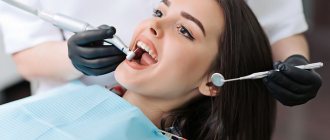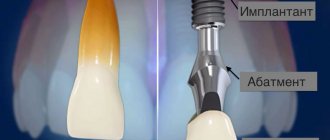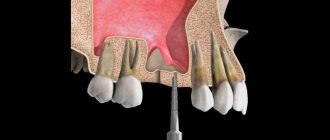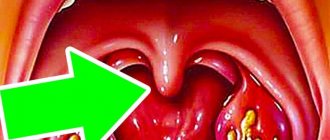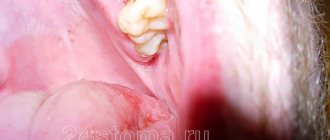Read in the article:
- How alcohol affects teeth
- Causes of toothache when drinking alcohol
- The dangers of drinking alcohol to relieve toothache
- How to relieve toothache after alcohol
It is not necessary to have thinned enamel to suffer from pain after drinking cognac, vodka or whiskey. Ethanol is a heavy poison and neurotoxin that undermines the immune system and affects the psycho-emotional state. Alcohol washes away calcium, which is part of the mineralized tissue of teeth. Because of this, people suffer from pain that is difficult to relieve with painkillers.
How does alcohol affect teeth?
There is a myth that vodka can disinfect the oral cavity and fight bacteria that cause caries or gum disease. In fact, the effect is the opposite - alcoholic drinks corrode the mucous membrane, which increases the likelihood of inflammation. Even low-alcohol cocktails wash away calcium in huge quantities, and dentin consists of it. Consequently, tissues suffer from a deficiency of this mineral and become brittle, which increases the likelihood of cracks and holes. As practice shows, alcoholics are 30% more likely to develop dental caries.
Teeth and gums also weaken because zinc, iron, phosphorus, and magnesium are additionally washed out. This causes bleeding gums. It is much worse that the soft tissues are destroyed, so the support of the teeth weakens. Increases the chance of falling out. Alcoholics face the problem of tooth loss in the third stage, when the body is in critical condition.
Prevention and treatment
The ability to prevent dry mouth largely depends on what causes it. One way or another, giving up alcohol will help you more accurately determine the cause of the problem. If you do drink alcohol, alternate alcoholic drinks with water to reduce their diuretic effects. Dry mouth can result in the appearance of ulcers on the mucous membrane: use a mouth rinse that softens the mucous membrane until salivation returns to normal. Other hygiene products designed to combat xerostomia may also help you.
Causes of toothache when drinking alcohol
Alcoholic drinks affect the natural microflora of the oral cavity. Because of this, pathogenic bacteria spread, causing caries and gum damage. The sensitivity of tissues increases, so alcoholics cannot drink hot or cold drinks - pain immediately appears.
It is necessary to take into account the fact that alcoholic beverages contain acids. This includes wine, champagne, port, cognac, and cocktails. The acid burns the mucous membrane and thins the tooth enamel. Therefore, periodontal disease, caries, and erosion develop. The natural shade changes, the color becomes yellow-gray. If a person already has fillings, dentures, bridges or implants installed, they become fragile and wear out. Often, alcoholics' fillings fall out, which leads to critical consequences - pathogenic microflora leads to inflammation of the root, which subsequently causes tooth extraction.
It is much worse if a person has expensive implants and drinks strong drinks. The probability that the implant will fly out or will not take root is very high. In the future, the doctor is unlikely to be able to install a new implant. Therefore, after surgery you need to give up drinking 100%.
Dentists identify the following causes of acute pain after drinking strong drinks:
- Pulpitis.
- Hypothermia.
- Inflammation of the trigeminal nerve.
- Caries.
- Stress.
- Thinning of enamel.
- Angina pectoris.
- Root cyst.
If you experience any discomfort after eating, contact your dentist immediately.
Our phone numbers:
What is alcohol?
Alcohol is a depressant, that is, a substance that slows down all processes in the body. Small doses of alcohol give a feeling of relaxation and self-confidence. In large doses, it slows down the reaction and negatively affects, for example, the eye and coordination. Driving while not sober is extremely dangerous. A person in a state of severe intoxication experiences nausea, dizziness, and may lose consciousness, then on top of everything else there is the danger of choking on his own vomit.
The degree of intoxication may depend in part on the strength of the drink, that is, on the concentration of alcohol in it. The strongest drinks are whiskey, vodka, followed by various wines, and finally, BEER. In addition, the size of the drinker matters. In general, larger people are more resistant to the effects of alcohol than smaller people.
Alcohol abuse can lead to obesity, because alcohol contains calories, although it is not nutritious at all, to ulcers, cirrhosis of the liver, as well as to diseases of the brain, kidneys and muscles, including the heart.
The brain of a person who regularly drinks alcohol in large doses constantly struggles with its depressive effects. If such a person stops drinking, his brain, by inertia, continues its compensatory activity, which is why he becomes excited, nervous, fussy, his hands tremble, and this continues until he drinks more. Here is a typical example of alcohol addiction.
Scientific studies and statistics show that people who drink alcohol in light or moderate doses have lower premature mortality than non-drinkers and heavy drinkers. Various theories have been put forward to explain this phenomenon: some believe that alcohol causes the body to produce substances known as high-density lipoproteins, which prevent cholesterol from depositing in the arteries. Others believe that the heart is protected by substances found in certain varieties of red wines that inhibit oxidative processes. The well-known relaxing effect of alcohol also helps with stress.
It would be bad if these facts prompted someone to take a drink for the first time or increase their alcohol consumption. Drinking destroys the brain, liver, digestive tract and stomach. Liver cirrhosis and pancreatic cancer are diseases of drinkers. Obesity and hypertension, as well as heart disease, are the result of heavy drinking.
The level of alcohol concentration in the blood depends on a number of factors.
- If you eat fatty foods, then intoxication will not be as quick.
- The high content of animal and vegetable fats slows down the absorption of alcohol and the digestion of the food itself.
- The fuller the stomach, the longer it will take for alcohol to reach the circulatory system.
- The thicker your body fat, the slower alcohol is digested and absorbed into the blood.
- Body weight: the heavier you are, the lesser the effects of alcohol on you.
- Your reaction to drinking 80 mg of alcohol may be completely different than someone else's. Typically, young people and women are more susceptible to alcohol.
The ability to consume alcohol and the effect it has on different people varies; however, it is believed that a safe dose (from a health point of view) is somewhere around 5 liters of BEER of medium strength or 10 large glasses of wine per week for men and 2/ 3 of this dose for women, provided, of course, that this amount will be lost evenly over the course of a week, and not in 1-2 times. If you can, try not to drink on an empty stomach.
One of the surest ways to avoid a hangover is to not drink on an empty stomach. Some argue that drinking a glass of milk before drinking alcohol slows down its absorption in the body. Following this advice, drink in moderation and dilute alcoholic drinks.
Alcoholism – what is it?
Alcoholism is the regular, compulsive consumption of large amounts of alcohol over a long period of time. It is the most serious form of drug addiction in modern times, affecting between 1 and 5% of the population in most countries. An alcoholic drinks compulsively in response to a psychological or physical dependence on alcohol.
Anyone can become an alcoholic. However, studies have shown that for children of alcoholics, the risk of becoming alcohol dependent is 4-6 times higher than for children of non-alcoholics.
The study of alcohol consumption among young people in Russia is largely based on the experience of similar studies abroad, which in the late 19th and early 20th centuries were widely carried out in Western Europe and North America and were conducted in a variety of directions:
- The prevalence and patterns of alcohol consumption among students were studied.
- The effect of alcohol on children's and adolescents' bodies was studied.
- The relationship between academic performance and alcohol consumption was determined.
- Anti-alcohol education programs were developed and tested.
A significant place among the studies of this period was occupied by works illustrating the prevalence and nature of drinking customs, when children were given alcoholic beverages for:
- “health promotion”
- "appetite"
- “improved growth”
- “to relieve teething”
- “warming up”
- “satisfy hunger”
- "calm"
The strong belief in the strengthening effect of alcohol that existed in the 19th and at the turn of the 20th centuries often resulted in the direct alcoholization of the child.
It is estimated that two thirds of alcoholics are men. Case studies of alcoholism show that alcoholism is often part of the overall picture of depressive illness. Many alcoholics suffer from childhood emotional problems, often related to the loss, absence, or inadequacy of one or both parents.
Six stages of alcoholism
Casual drunkenness can lead to alcoholism: because the drinker begins to turn to alcohol to relieve stress, or because it is so strong that the initial stages of addiction remain unnoticed.
Early alcoholism is marked by the appearance of memory lapses. Alcoholization of the younger generation is considered by most researchers as a significant indicator of the dysfunction of the microsocial environment. This determines the constant interest in studying the problem of the prevalence and nature of early alcoholism.
Early alcoholism includes exposure to intoxicating doses of alcohol before the age of 16. Early (teenage) alcoholism should be discussed when its first signs appear before the age of 18. When analyzing the alcoholism of minors, we proceeded from the methodologically important proposition that the use of alcoholic beverages by adolescents must be considered as a form of behavioral disorder. This requires a broader and deeper approach to the problem under consideration, not limited to the framework of social and clinical narcology.
Boys drink the main types of alcoholic beverages more often than girls, and as their strength increases, this difference becomes significant. Among urban schoolchildren, it is common to consume predominantly weak alcoholic drinks - beer, wine, while students in rural schools are more familiar with the tastes of strong alcoholic drinks. In the 1920s and 1920s, one could find fairly widespread use of moonshine by schoolchildren: 1.0–32.0% among boys and 0.9–12% among girls. The frequency of vodka consumption increased with age.
Almost all socio-hygienic and clinical-social studies of youth alcoholism used the survey method in various modifications - from correspondence questionnaires to telephone interviews and clinical interviews.
It is most difficult to compare data on the prevalence and frequency of alcohol consumption among young people, since authors not only from different countries, but even from the same country in the same historical period used qualitatively different methods for identifying users and non-users. alcohol, different age classifications, etc.
Despite the diversity of criteria for identifying alcohol abusers and alcoholics in adolescence, data from various authors still allows us to judge that their number is quite large. Analysis of the materials shows that over the past 100 years, regardless of the level of consumption and abuse of alcoholic beverages, the prevalence of alcoholism itself among young people remains at a fairly stable level, not exceeding 5% of patients under 20 years of age and 8-10% of patients under 25 years of age. This fact is of fundamental importance, as it indicates the dynamics of the emergence and development of early forms of alcoholism in the holistic structure of alcohol morbidity. Drinking on the sly and an urgent need for the first drink indicate a growing addiction. The drinker feels guilty, but cannot discuss his problem with others.
Basic alcoholism - the drinker cannot stop until he reaches the stage of poisoning. He encourages himself with self-justifications and pompous promises, but all his promises and intentions remain unfulfilled. He begins to avoid family and friends and neglect food, past interests, work and money. Physical deterioration of health occurs. Resistance to alcohol decreases.
Chronic alcoholism is characterized by further moral decline, irrational thinking, vague fears, fantasies and psychopathic behavior. Physical damage is mounting. The drinker no longer has an alibi, and he can no longer take steps to get out of the current situation. A person can reach this stage in 5-25 years.
Treatment is usually carried out through special programs for alcoholics. Psychologically, the desire to get help is revived in the alcoholic, and he begins to think more rationally. Ideally, he also develops hope, moral responsibility, external interests, self-esteem, and satisfaction with abstinence from alcohol.
The final stage of alcoholism occurs if the alcoholic refuses treatment or breaks down again after treatment. Irreversible mental and physical damage usually ends in death.
If you write all this briefly, this is what you get:
- Domestic drunkenness
- Early alcoholism
- Basic alcoholism
- Chronic alcoholism
- Cure
- The final stage of alcoholism
What determines the degree of intoxication of a person?
The effect of alcohol on behavior depends on the amount of alcohol that reaches the brain through the blood. This “blood alcohol level” is determined by several other factors besides how much you drink.
The size of the liver determines the rate of oxidation and elimination of alcohol.
The weight of the person himself determines the amount of blood in the body, since the volume of blood is proportional to it. The larger the person, the more the blood is diluted by the alcohol consumed and the more it is needed to have the same effect.
The speed and manner of alcohol consumption are also important. The slower a person drinks a certain amount of alcohol, the weaker its effects.
Drinking alcohol on an empty stomach has a stronger and faster effect than drinking it during or after a meal. Food acts as a buffer during absorption.
The process of intoxication.
When drinking alcohol, the transmission of impulses in the nervous system slows down. The highest levels of the brain are the first to be affected - inhibitions, excitement and anxiety disappear, giving way to a feeling of contentment and euphoria. As the lower levels of the brain are affected, coordination, vision and speech deteriorate. Small blood vessels in the skin dilate. Heat is radiated and the person becomes hot. This means that the blood has diverted away from the internal organs of the body, where the blood vessels have already narrowed due to the effects of alcohol on the nervous system. Therefore, the temperature of the internal organs drops at the same time. A possible increase in sexual desire is associated with the suppression of ordinary prohibitions. As blood alcohol levels rise, physical sexual performance becomes increasingly impaired. Eventually the toxic effects of alcohol cause nausea and possibly vomiting.
Hangover
A hangover is bad... And now in more detail:
A hangover is physical discomfort after consuming excessive amounts of alcohol. Symptoms may include headache, upset stomach, thirst, dizziness and irritability. A hangover occurs as a result of three processes. Firstly, the gastric mucosa is irritated by excess alcohol, and the functioning of the stomach is impaired. Secondly, cell dehydration occurs if the amount of alcohol consumed exceeds the liver's capacity, resulting in alcohol remaining in the blood for a long time. Thirdly, the level of alcohol has a “shock” effect on the nervous system, from which it takes time to recover.
The best way to avoid a hangover is not to drink too much (or better yet, not to drink at all). But the likelihood of a hangover is reduced if alcohol is mixed with a snack (Havka): the intake and absorption of alcohol is extended over a longer period of time, and food serves as a barrier. Non-alcoholic drinks taken at the same time or after will dilute the alcohol. The ill effects are also usually reduced if alcohol is consumed in a relaxed environment and smoking is kept to a minimum.
The stomach is soothed by a fresh lining: milk, raw eggs or just a good breakfast! Only then can you take aspirin or other painkillers to relieve your headache. The risk of stomach irritation from pain medications is much greater when the stomach is empty. It is known that citrus juices, honey and vitamin C contain an “anti-hangover factor”. Fizzy drinks can have a soothing effect on the stomach. Liquids of any kind will help restore the fluid content of dehydrated cells. Coffee and tea are used to clear your head (caffeine stimulates the nervous system), and sugar will provide you with energy; but both caffeine and sugar can make a person's condition worse after their immediate effects wear off. In the same way, alcohol is also taken as a temporary relief, which (in moderation) encourages a withered nervous system and seems to disperse unpleasant sensations. But this is only a reprieve: the initial hangover and the hangover from a new dose of alcohol are still waiting for you!
The effect of alcohol on the body
Blood. Alcohol inhibits the production of platelets, as well as white and red blood cells. Result: anemia, infections, bleeding
Brain . Alcohol slows down blood circulation in the vessels of the brain, leading to constant oxygen starvation of its cells, resulting in weakening of memory and slow mental degradation (or simply dullness). Early sclerotic changes develop in the vessels, and the risk of cerebral hemorrhage increases. Alcohol destroys the connections between the nerve cells of the brain, developing in them the need for alcohol and alcohol dependence. Destruction of brain cells and degeneration of the nervous system sometimes lead to pneumonia, heart and kidney failure, or organic psychosis. Delirium tremens is a condition accompanied by extreme agitation, mental insanity, restlessness, fever, trembling, fast and irregular pulse and hallucinations, which often occurs when drinking large quantities of alcohol after several days of abstinence.
Heart. Alcohol abuse causes increased blood cholesterol levels, persistent hypertension and myocardial dystrophy. Cardiovascular failure puts the patient on the brink of the grave. Alcoholic myopathy: muscle degeneration resulting from alcoholism. The reasons for this are lack of use of muscles, poor diet and alcohol damage to the nervous system. Alcoholic cardiomyopathy affects the heart muscle.
Intestines. The constant effect of alcohol on the wall of the small intestine leads to a change in the structure of cells, and they lose the ability to fully absorb nutrients and mineral components, which ends in the depletion of the alcoholic’s body.
Diseases associated with poor nutrition and vitamin deficiency , such as scurvy, pellagra and beriberi, caused by neglecting food for the sake of drinking. Persistent inflammation of the stomach and later intestines with an increased risk of ulcers.
Liver. Considering that 95% of all alcohol entering the body is neutralized in the liver, it is clear that this organ suffers the most from alcohol: an inflammatory process occurs (hepatitis), and then scarring (cirrhosis). The liver ceases to perform its function of disinfecting toxic metabolic products, producing blood proteins and other important functions, which leads to the inevitable death of the patient. Cirrhosis is an insidious disease: it slowly creeps up on a person, and then strikes, and immediately leads to death. Ten percent of chronic alcoholics have cirrhosis of the liver, and 75% of people with cirrhosis are or have been alcoholics. Until cirrhosis develops sufficiently, there are almost no symptoms, then the alcoholic begins to complain of a general deterioration in health, loss of appetite, nausea, vomiting and digestive problems. The cause of the disease is the toxic effects of alcohol.
Pancreas. Patients suffering from alcoholism are 10 times more likely to develop diabetes than non-drinkers: alcohol destroys the pancreas, the organ that produces insulin, and profoundly distorts metabolism.
Leather. A drinking person almost always looks older than his age: his skin very soon loses its elasticity and ages prematurely.
Stomach . Alcohol suppresses the production of mucin, which performs a protective function in relation to the gastric mucosa, which leads to the occurrence of peptic ulcers.
A characteristic manifestation of alcohol poisoning is repeated vomiting. Even a single consumption of small doses of alcoholic beverages is accompanied in adolescents by pronounced manifestations of intoxication, especially in the nervous system. The most severe poisonings are observed in persons with a complicated medical history, against the background of organic cerebral insufficiency or concomitant somatic pathology.
It is much less clear to describe the nature of the influence of alcohol on the psyche of a teenager. In general, the clinical picture of severe intoxication in a teenager in most cases looks like this: short-term excitement is then replaced by general depression, stupor, increasing drowsiness, lethargy, slow incoherent speech, and loss of orientation.
If we turn to subjective data, to survey data, then despite their incorrectness (usually those who have recently become acquainted with alcohol and those who have some experience of alcoholism are simultaneously interviewed; it is not always checked whether the child being interviewed correctly understood the researcher’s question and etc.) it can be stated that in subjective experiences, especially at the very beginning of acquaintance with alcohol, negative or indifferent sensations play a predominant role. Of the 605 schoolchildren aged 6-16 years surveyed, while drinking alcohol, 41.1% had unpleasant and severe somatopsychic sensations, 35.6% had an indifferent state, 23% had a pleasant state, and 61.2% had a headache after drinking. %, nausea – in 8.4%, vomiting – in 14.8%, depressed state in 3.6%, weakness in 12.4% of respondents. When asked about how they felt when they were drunk, the following answers were received from schoolchildren:
- mood lifting – 47.8%
- indifferent state – 18.4%
- low mood – 6.1%
- physical illness – 27.6%
When drinking alcohol for the first time, 53% of teenagers felt disgust. Over time, with an increase in the “experience” of drinking alcohol, the objective picture, however, changes dramatically. More than 90% of the adolescents surveyed with two years or more “experience” of drinking believed that intoxication is accompanied by a feeling of a surge of energy, a feeling of contentment, comfort, and an increase in mood, that is, those attributes of a mental state that ordinary consciousness often attributes to the action begin to appear in their statements. alcohol.
Diseases or simply PSYCHOSIS
Delirium tremens usually occurs against the background of a hangover, with a sudden cessation of drinking or during a period of abstinence, in cases of the addition of somatic diseases, injuries (especially fractures). The initial symptoms of psychosis are worsening night sleep, the appearance of vegetative symptoms and tremors, as well as the general liveliness of the patient, noted in his movements, speech, facial expressions and especially mood. Over a short period of time, one can notice a variety of shades of mood, while during the period of a hangover the mood is monotonous, characterized by depression and anxiety. Unusual changes in mood and general liveliness intensify in the evening and at night, while during the day these disorders decrease sharply and may even disappear completely, which allows the patient to carry out his professional duties. As the symptoms of psychosis increase, complete insomnia appears, against which visual illusions first arise, and then various hallucinations and delusions.
Delirium tremens is characterized by a predominance of true visual hallucinations. They are characterized by a multiplicity of images and mobility. Most often these are insects (bugs, cockroaches, beetles, flies) and small animals (cats, rats, mice). Less often, patients see large animals and people, in some cases having a fantastic appearance. Visions of snakes, devils, as well as deceased relatives, the so-called wandering dead, are very typical. In some cases, visual illusions and hallucinations are single, in others they are multiple and scene-like, i.e. the patient sees complex pictures. Often there are auditory, tactile, olfactory hallucinations, sensations of disturbance of the body position in space. The mood of patients is extremely changeable. In it, within a short time, one can note fear, complacency, bewilderment, surprise, and despair. Patients usually move continuously, their facial expressions are expressive. Motor reactions correspond to the prevailing hallucinations and affect at the moment - with fear and frightening visions, the patient hides, defends himself, is excited; during periods of complacency - passive.
Patients are characterized by extreme distractibility to external events; everything around them attracts their attention. Delirium in alcoholic delirium is fragmentary and reflects hallucinatory disorders. In terms of content, this is most often delirium of persecution. Patients are usually falsely oriented in place (while in the hospital, they say that they are at home, in a restaurant, at work), but are oriented in their own personality. Alcoholic delirium is characterized by periodic temporary disappearance of a significant part of mental disorders, the so-called lucid - light - intervals, as well as a naturally pronounced increase in symptoms of psychosis in the evening and at night.
Delirium tremens is constantly accompanied by a variety of somatic disorders - trembling, sudden sweating, hyperemia of the skin, especially the face. The temperature is most often low-grade. The pulse is increased. Protein often appears in the urine; in the blood - increased bilirubin content, a shift in the leukocyte formula to the left, acceleration of ROE. The course of the disease is usually short-term. Even without treatment, symptoms of psychosis disappear within 3–5 days. Less commonly, the disease drags on for 1–1.5 weeks. Recovery is more often observed in the form of a crisis - after deep sleep. Sometimes recovery is gradual, worsening in the evening and at night and improving during the day. Signs indicating an unfavorable prognosis for delirium tremens are the development of symptoms of occupational and delirium delirium, high fever, and collapsed states.
Alcoholic hallucination develops either during a hangover or at the height of binge drinking. The main disorder is abundant auditory hallucinations combined with delusions of persecution. Verbal auditory hallucinations predominate, and the patient usually hears words “uttered” by a large number of people - a “chorus of voices,” as patients often define it. Most often, the “voices” talk among themselves about the patient, less often they are addressed to the patient himself. The content of verbal hallucinations is threats, accusing discussions of the patient’s past actions, cynical abuse, insults. Often hallucinations are mocking and teasing in nature. The voices either intensify to a scream or weaken to a whisper. Delusional ideas in content are closely related to auditory hallucinations - the so-called. hallucinatory delusion. They are fragmentary and unsystematic. The predominant affect is intense anxiety and fear. At the beginning of psychosis, patients are motorically excited, but soon some retardation appears or very orderly behavior is observed, masking the psychosis. The latter creates a false and dangerous idea of improvement. As a rule, symptoms of psychosis intensify in the evening and at night. Somatic disorders, usual for hangover syndrome, are constant. The duration of alcoholic hallucinosis is from 2-3 days to several weeks; in rare cases, the disease drags on for up to several months.
Alcohol depression always appears against the background of a hangover syndrome. Characterized by a depressed-anxious mood, ideas of self-deprecation, tearfulness, as well as individual ideas of relationship and persecution. Duration – from several days to 1–2 weeks. It is in a state of alcoholic depression that alcoholics most often commit suicide.
Alcoholic epilepsy is symptomatic and associated with toxicosis. Seizures most often occur at the height of intoxication during a hangover or during alcoholic delirium. As a rule, epileptiform seizures are observed. Minor seizures, twilight stupefactions, and auras do not occur in alcoholic epilepsy. With the cessation of alcohol abuse, seizures disappear.
Alcoholic paranoid is an alcoholic psychosis, the main symptom of which is delusion. Occurs in a state of hangover syndrome and at the height of binge drinking. The content of delusional ideas is limited to persecution or jealousy (ideas of adultery). In the first case, patients believe that there is a group of people who want to rob or kill them. They see confirmation of their thoughts in the gestures, actions and words of others. Characterized by confusion, intense anxiety, often giving way to fear. The actions of patients are impulsive - they jump off vehicles while moving, suddenly run away, turn to government authorities for help, and sometimes attack imaginary enemies. In some cases, delirium is accompanied by mild verbal illusions and hallucinations, and individual delirious symptoms that occur in the evening and at night. The course of this form of paranoid is usually short-term - from several days to several weeks. Occasionally, psychosis lasts for months.
Alcoholic encephalopathies are alcoholic psychoses that develop in connection with metabolic disorders, primarily of vitamins B and PP. Alcoholic encephalopathy occurs as a result of many years of alcoholism, accompanied by chronic gastritis or enteritis and, as a consequence of the latter, impaired absorption in the intestine. Alcoholic encephalopathies develop mainly in those individuals who drink a lot but eat very little. Most often, alcoholic encephalopathies occur in the spring and early summer months. They are conventionally divided into acute and chronic. There are no sharp transitions between them. The most common form of acute alcoholic encephalopathy is Gaye-Wernicke encephalopathy. The onset is most often gradual, lasting 2–3 months, rarely longer. Increasing asthenia appears, in which weakness and exhaustion, combined with memory disorders, predominate. Appetite decreases and then completely disappears, night sleep is disrupted, diarrhea and vomiting, headaches and dizziness, loss of balance, and polyneuritis develop somewhat less frequently. Subsequently, the full picture of the disease develops. Emerging psychoses most often represent erased and undeveloped delirious pictures, less often – anxiety-delusional states. A few days later - two to three weeks after the onset of psychotic disorders - the mental state begins to be determined by either symptoms of apathetic stupor or stupor, turning into a coma. Without treatment, the disease most often ends in death. Neurological disorders are constant and great. Autonomic symptoms usually include heart rhythm disturbances, fever of central origin, breathing problems, and sphincter weakness. You can constantly observe an increase in muscle tone. Sharply increased sensitivity to pain, e.g. for injections. Various hyperkinesis are common. The appearance of paralysis of the extraocular muscles, photophobia, and nystagmus usually indicates the highest phase of the disease. It is always possible to identify polyneuritis phenomena varying in intensity and localization. The general physical condition of patients is characterized by progressive weight loss up to severe cachexia. The skin is pale or dark brown in color.
Chronic forms of alcoholic encephalopathy include Korsakoff psychosis and alcoholic pseudoparalysis. In some cases, they develop gradually, over a number of months, and then the nature of the onset corresponds to Gaye-Vorik encephalopathy, in others - acutely, after alcoholic psychoses, usually after delirium tremens.
Korsakov psychosis is manifested by memory impairments: the patient does not remember anything from current events or remembers little; Retrograde amnesia and false memories are noted - confabulations regarding everyday events. The latter can be expressed to varying degrees, sometimes absent. Patients are lethargic, passive, and show no interest in their surroundings. Speech and motor reactions are impoverished. Of the neurological disorders, the most common phenomena are polyneuritis of varying intensity. The disease lasts for months, sometimes years. Improvements are possible when you stop drinking. Alcoholic pseudoparalysis is characterized by dementia with pronounced changes in memory, loss of acquired knowledge and skills, profound impairments in judgment, and loss of awareness of the disease and criticism. The background of the mood is determined by carelessness and, in some cases, ideas of greatness. Sometimes memory disorders predominate in combination with confabulations. The course is similar to Korsakov psychosis.
Treatment of alcoholic psychoses. Patients with alcoholic psychosis must be urgently admitted to a special hospital. Some patients with hangover syndrome are also subject to hospitalization in cases where mental disorders, especially mood changes, are intense. Treatment of alcoholic psychosis in the hospital should be comprehensive - the use of multivitamins (B1, C, PP), cardiac and hypnotics with hypoglycemic and comatose doses of insulin or psychotronic (aminazine, haloperidol) drugs. The only effective treatment for alcoholic, especially acute, encephalonitis is therapy with large doses of vitamins: B1 - up to 600 mg, C - up to 1000 mg, PP - up to 300-400 mg per day for 2-4 weeks.
Alcohol poisoning.
People who abuse alcohol sometimes fall into a state of stupor, leading to coma. In extremely severe cases, breathing may stop.
However, do not assume that a person who appears intoxicated has necessarily consumed alcohol. Similar symptoms are observed in other conditions (head injuries, stroke and diabetes, as well as overdose of certain drugs).
First aid.
If the victim is unconscious but still breathing, remove anything obstructing breathing (pieces of snacks, breakfast) from the mouth and pharynx with your finger, do not try to induce vomiting. Place the victim in the resuscitation position, free the neck and waist from tight clothing, and ensure that the airway remains patent.
If the victim does not regain consciousness, call an ambulance.
Conclusion
Alcoholism is a serious disease that in some cases develops over many years. So it’s better not to drink a lot and often! And if you drink, then drink BEER!!! :)
Dentist Lisitsina E.E.
The dangers of drinking alcohol to relieve toothache
Often people want to save money on painkillers. They motivate this not only by savings, but also by safety. Supposedly, vodka is a pure product that does not contain dangerous chemicals. In fact, drinking alcohol before or after dental treatment only makes the situation worse. Firstly, the microflora deteriorates and the volume of pathogenic bacteria increases. Secondly, the enamel becomes thinner, which leads to cracks.
If you are planning a trip to the dentist, then drinking is prohibited. The reaction of anesthesia with alcohol is very strong, which can cause respiratory arrest or seizures. In this case, blood clotting is impaired, so there can be enormous blood loss and you will have to call an ambulance. It is much worse if the anesthesia does not work at all and the tooth is pulled out without pain relief. The terrible pain can cause a person to lose consciousness.
Tea
Tea, so popular among us, is fundamentally safe for teeth.
. Here you should remember that we are talking about the tea that you brew in the morning, and not about the drink in a plastic bottle called “ice tea”, “ice tea”, “iced tea”, etc.
According to this material, green tea has the highest pH level
, it is slightly lower for chamomile and mint teas. The pH level of black tea is from 4.9 to 5.5. But hibiscus has a very low pH level, about 2.5, which means this tea is unsafe for teeth.
Bottled “iced” teas are drinks in the same range as a variety of colas. Their pH ranges on average from 2.5 to 3.5. In addition, they are loaded with sugar beyond measure, which makes such drinks real enemies of the teeth.
How to relieve toothache after alcohol?
Visit your dentist right away to have your mouth examined and take photographs to evaluate the condition of the roots. No folk methods will help solve the problem, much less another glass of vodka. It is important to deal with the root cause. If after complex treatment a person does not stop drinking, there will be serious consequences.
You will get rid of alcoholism 100% anonymously. Inpatient and outpatient treatment programs have been developed, including:
- Detoxification – removing toxins from the body, replenishing mineral/vitamin deficiencies, restoring water-salt balance.
- Medical and social rehabilitation - work in groups, drug therapy, visits to a psychologist.
- Social and psychological rehabilitation.
- Social adaptation.
You can get a free consultation and make an appointment with a narcologist by calling 8.
Milk and dairy products
The pH value of milk is approximately 6.6
, that is, milk does not harm teeth. As part of this work, the researchers compared milk from 35 cows, which allowed them to obtain this result. Moreover, the proteins (caseins) and minerals contained in milk prevent the formation of colonies of cariogenic bacteria on the teeth.
Kefir has a low pH, 4.2 – 4.6
, which is not very good for teeth (as this article tells us).
At the same time, kefir and other fermented milk products contain lactobacilli and bifidobacteria, which, among other beneficial properties, have some ability to inhibit the development of Streptococcus mutans
, but here, as they say, there are nuances, according to this study. However, no one has canceled the ability of fermented milk products to enhance the generation of saliva, which always has a positive effect on the condition of teeth.
Which organs are affected first?
According to the Federal Service for Surveillance on Consumer Rights Protection and Human Welfare, the number of people addicted to alcohol has exceeded 5 million people.
The number of officially registered people with alcohol dependence in our country is at the level of 2% of the country's population over 14 years of age. Alcoholism significantly aggravates the course of cardiovascular diseases and diseases of the digestive system. 62% of suicides, 72% of murders are associated with alcohol abuse. Alcoholism, one way or another, caused the death of about 30% of men and 15% of men (i.e., about 500,000 people die from alcohol per year). All people who drink alcohol at least occasionally experience certain consequences. It all depends on the frequency of drinking alcohol, on the dose drunk, on the person’s immune system and his individual characteristics. Not a single system of the human body remains indifferent to alcohol.
How to relieve a hangover in a mildly intoxicated person?
Typically, a hangover in a healthy person lasts about 24 hours. You need to hold out for 24 hours. How to do it? Regardless of the severity of the symptoms, the most important way to relieve hangover symptoms is to quickly remove acetaldehyde from the body, and for this you need to drink as much as possible - water, weak sweet tea, tomato juice, cabbage or cucumber pickle.
When choosing an anti-hangover drink, listen to your body - drink what you want. The exception is strong tea or coffee. They will not help you, but will only increase the load on the heart, which is already damaged. It is advisable not to drink carbonated drinks.
And one more recommendation for mild intoxication is sleep, during which the liver enzyme systems will independently cope with the incoming dose of alcohol poison. What you should never do is get hungover. A new portion of alcohol will return the state of euphoria for an hour, but the ethanol processing systems already running in enhanced mode will quickly utilize ethanol to acetaldehyde and increase its concentration in the blood. This will ultimately only increase intoxication and initiate the onset of alcohol dependence. To summarize, we can say that if hangover intoxication is not severe, the best ways to cure a hangover are to drink plenty of fluids and sleep.
For severe headaches, you can take medications based on acetylsalicylic acid. To remove unabsorbed alcohol and reduce nausea, you can take enterosorbents. But do not experiment, use only drugs that you have already tested and tolerate well.
What is a hangover and how is it classified?
The hangover of a healthy person and an alcoholic are two completely different conditions. Without understanding the fundamental difference between them, it is impossible to prescribe adequate treatment for a hangover.
The basis of a hangover in a healthy person, the so-called veisalgia, is poisoning by the products of the breakdown of ethanol by liver cells. Acetaldehyde plays a major role in the formation of hangover symptoms. At the same time, the influence of alcohol itself and fusel oils contained in alcohol should not be excluded. A hangover manifests itself as a severe headache, nausea, vomiting, thirst (in common parlance, dried fruit) and other unpleasant sensations.
In a patient with chronic alcoholism, a hangover is a withdrawal syndrome and is called a hangover or withdrawal syndrome. It occurs due to the cessation of ethanol intake, which has already been integrated into the metabolic processes of the body and has become a physiological need. In fact, alcohol, as a more accessible and easily digestible energy material, replaces glucose and becomes vital. Alcohol withdrawal can provoke such severe conditions as delirium tremens and other alcoholic psychoses. A hangover, the treatment of which in this case requires the mandatory assistance of an experienced narcologist, has to be relieved with the help of a dropper. Its composition is determined by the doctor depending on the severity of the patient’s condition and the presence of concomitant diseases.
Treating alcoholism with acupuncture is an effective way to deal with addiction in the early stages.
Wine
In the vast majority of cases, the hydrogen index of wine is 3-4
(see this page). It doesn't matter whether the wine is white or red, in terms of pH, this drink is harmful to your teeth.
Red wine also has a negative effect on the color of teeth. But: according to this study, the substances it contains (proanthocyanidins that wine gets from grapes) have the ability to fight cariogenic bacteria
. Of course, excessive consumption of wine should not be justified by this property.
What not to do if you have a hangover?
Let's rephrase the question: what should never be used to treat a hangover? Because all the actions of a person suffering from a hangover are aimed at alleviating the symptoms. At the same time, the set of methods and means can be very diverse. But if some of them really help, while others play the role of a placebo, then others can only do harm. It is precisely these methods that I want to warn against:
- As already mentioned, you should not relieve a hangover with coffee or strong tea. The caffeine contained in them increases the myocardial need for oxygen, and the heart already needs it. And besides, caffeine can increase blood pressure, and this is already dangerous and can result in a stroke.
- You shouldn't fight a hangover in a bathhouse. It seems that all toxic metabolites will be released with sweat. But this is far from true. Excessive sweating will cause even more severe dehydration of the body, which, together with high temperature and high humidity, can be extremely dangerous for the heart and result in a heart attack.
- And I won’t tire of repeating – you can’t get hungover. This is the greatest harm, leading to increased intoxication, alcoholization of the body, and even binge drinking. The latter is especially relevant for the first stage of alcoholism and symbolizes its transition to the second stage.
By the way, call an ambulance immediately if, during a hangover, you suddenly feel something unusual in the form of:
- too pronounced tachycardia, when the heart almost jumps out of the chest;
- interruptions in cardiac activity (arrhythmias);
- sharp throbbing headache;
- pressing pain behind the sternum radiating to the left arm, etc.
These may be symptoms of a stroke or heart attack.
Antibiotics are prescribed, which means alcohol is prohibited
When implanting teeth, antibiotics are often prescribed (if teeth were removed before installing implants, there was pronounced periodontitis and periodontal disease). But antibiotics and alcohol are not compatible - not only your attending physician will tell you this, it is also written in the instructions for almost all drugs. The consequences can be both relatively harmless (the medicine simply will not work) or very sad - even death. Alcohol is prohibited during the entire period of taking antibiotics, as well as for at least 4 days after.
Yes, not all antibiotics cannot be combined with alcohol. But most of them. Among the unpleasant consequences are palpitations, nausea, vomiting, increased blood pressure and general intoxication of the body.
How severe can alcohol poisoning be?
It all depends on the severity of the poisoning. Depending on the ethyl alcohol content, the following degrees of alcohol poisoning are differentiated:
- A mild degree that occurs when the concentration of ethanol in the blood is no more than 1 ‰ (ppm is 1 thousandth of something or 1 tenth of a percent (‰ = 1⁄1000 = 0.1% = 0.001). This degree of intoxication is accompanied by moderate disturbances of autonomic function in in the form of facial flushing, increased breathing, tachycardia, as well as fine motor disorders.These manifestations do not require special medical intervention and go away on their own after a few hours of sleep.
- The average degree is observed at an alcohol concentration of 1 to 2.5 ‰. With a hangover, nausea, vomiting, pallor or cyanosis of the skin, severe shortness of breath and tachycardia, and possible arrhythmia often develop. In this condition, urgent detoxification is required by a drug treatment team called to the home. Hospitalization for moderate alcohol poisoning is not provided.
- Severe degree - ethanol content exceeds 2.5‰, sometimes reaching very high levels requiring resuscitation measures. Accompanied by depression of consciousness, misunderstanding of speech, change in skin color, vomiting, salivation (hypersalivation) and even coma. Convulsions, epileptic seizures, respiratory and cardiovascular disorders that are life-threatening may occur.
The state of severe intoxication can only be relieved in a hospital setting.
Sweet carbonated drinks
Here, unlike kefir, there can be no two opinions: soda = harm to teeth and more
. You've probably seen videos and programs that voiced the sugar content in a glass of cola (~8 spoons!).
The pH of sweet carbonated water is only 2-3, which is very bad for teeth. A number of studies have established a direct connection between soda and caries, but the matter is not limited to caries alone, since such drinks also cause more serious health problems, including type 2 diabetes.
So it is better to avoid drinking this kind of drink. At the very least, drink soda in very moderation and through a straw.
.
You forget that you need to see a doctor
Such situations, of course, arise if the patient drinks alcoholic beverages for a long period of time. Shifting the visit to the doctor by 1-2 days (after a month after installation of the implants) is allowed. But in the first week, visits to the doctor should be strictly day-to-day.
If a patient misses regular visits to the doctor, if the prosthesis is not adjusted, this can lead to disruption of the healing process of the implants and the functioning of the entire jaw system. For example, the bite changes due to improper closing of the jaws; the prosthesis will cause overload of the implants and the temporomandibular joint. Therefore, it is necessary to adhere to individual visit schedules.
Vodka, whiskey, cognac
If you set out to find information on the Internet about the pH value of vodka, get ready for several minutes of fruitless searching. There is no consensus on this drink: somewhere it is written that the pH of vodka is 3.5-4, somewhere it is stated that vodka is a neutral drink, GOST requires water with a pH from 5.5 to 7.8 for its manufacturing and the final product may have this indicator at the same level. The truth, as usual, is somewhere nearby: different vodkas have different pH
, that's all. Just don’t overuse it, because even if the pH of your preferred brand is normal, this does not mitigate the other negative properties of alcohol in any way.
The same can be said about other strong alcoholic drinks. For example, this study of brandy (you know that cognac is the only drink that is produced in the French province of the same name, right?) showed that the pH of the drink can range from 2.24 to 7.97. So the recommendations here are the same as for any other alcohol: be vigilant and prudent. And try not to savor such drinks
.
Plain and sparkling water
There is nothing better than ordinary drinking water for your teeth.
. Its pH ranges from 6.5 to 8.5, at 25 degrees – 7. Probably the only danger that water can pose in terms of dental health is a sharp temperature change that occurs when after a hot drink (for example, espresso) you drink cold water. Don't do this and everything will be fine. Drink as much water as your body requires.
Sparkling water is another matter
. Its pH is on average 3-4, that is, it is a harmful drink for teeth. Here we are talking specifically about simple sparkling water, and not about the sweet soda that we discussed above.
The properties of natural mineral water depend entirely on its source. Information about the pH of a natural mineral water can often be found on its label. Often beneficial waters of this series have pronounced medicinal properties, are sold in pharmacies and are used for certain indicators.
Total...
- Drink water when you are thirsty.
- Drink coffee/tea if you need to warm up and cheer up.
- Drink milk and dairy products if you like them and your stomach does not protest against their consumption.
- Drink soda only through a straw and in moderation.
- Alcoholic drinks... Think about more global consequences than damage to your teeth when you drink them.
Attention! This article is not indexed by search engines, so you can take it and publish it in the article section of your clinic’s website. The one who does it first will get the SEO effect. You will find other similar materials in the collection “Tell the Patient”.
Would you like to see similar materials in the blog/article section of the clinic’s website? Contact us (contact form below), we can create exclusive educational articles for you that will attract new patients to your clinic and simply help people.
Find out more about


